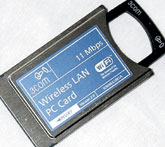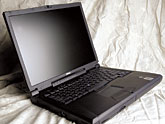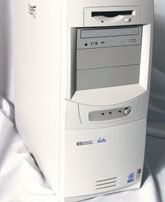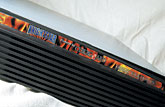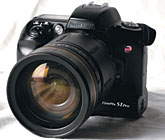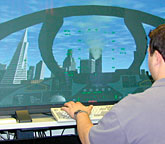Each year, the GCN Lab tests quite a few products for the government market. Many live up to their billing, some have significant problems, and a few go beyond expectations.As 2001 comes to a close, the GCN Lab takes its annual look back at the products that really shined at meeting the needs of government users. These 10 products earned our top accolades in 2001. All received A or B grades in GCN reviews.Now that 40 percent of Americans carry cellular phones, the airwaves are getting pretty crowded. One wireless services keeps users in touch digitally with radio backup.The with service [] married functional hardware with reliable software. The phone used the Global System for Mobile Communications standard, with encrypted signals, plus Integrated Digital Enhanced Network radio service. Its large screen was fine for Web browsing and running Java programs.Although the phone worked only on the digital network and had no analog mode, Nextel's network was extensive. Our test unit worked fine in Dallas, Detroit, Las Vegas, Los Angeles, St. Louis and Washington with no dropped calls.It came standard with a speakerphone for safe use in a car, and the separate radio band allowed instant communication with other Nextel users. Radio beat text messaging hands-down.The phone costs $169. Although Nextel's service plans are more expensive than most, the carrier bills calls to the second instead of rounding up to the next minute.Microsoft Corp.'s operating system [] was one of the best products we tested in 2001 because of its Windows NT kernel stability plus embedded CD-rewritable and DVD capability, encryption, remote access, backup and a built-in personal firewall. The complimentary Microsoft Office XP suite also had new features. Our favorite: cross-platform usability.The look and feel of the $400 XP Professional were different from Win 2000. The desktop icons and folders resembled those of Linux and Mac OS, which we found easier to understand, although some relearning was required.Don't try installing XP on multiple machines; it won't work on more than two different computers. Once XP is activated after installation, Microsoft records the PC specifications. If the specs change more than twice, XP becomes inoperable. If the specs don't change, however, the OS can be reinstalled many times.In our view, this minor hassle is well worthwhile to get a fusion of Win98's friendliness with the stability of Win 2000.With the and PC Card, 3Com Corp. of Santa Clara, Calif., has advanced IEEE 802.11b WiFi wireless networking to a new level [] by incorporating a Dynamic Host Configuration Protocol server and serious security.3Com's Dynamic Security Link comes embedded on every $600 Access Point 6000. It administers a 128-bit encoded key unique to each client and recycles the key whenever the $219 PC Card passes to a new access point or is rebooted. That's better than the usual 128-bit, shared-key security.3Com's PC Cards have retractable antennas and firmware that let them automatically configure to meet the wireless parameters in other countries.Weighty notebook PCs don't usually get good grades from the GCN Lab, but multiple benchmark scores proved the a standout in raw performance []. Its 1-GHz processor and 32M nVidia GeForce video worked well together.Besides raw power, the notebook excelled in other areas such as dissipating heat through good airflow inside and out. Some notebooks after limited use get as hot as a frying pan cooking a three-egg special, but the C810 remained cool to the touch even after power had been flowing through it for hours.It had all the bells and whistles you'd expect of a high-end notebook: a DVD drive, a generous 20G hard drive and a large display.Silent and fast, the [] was the quietest desktop PC ever tested in the GCN Lab, despite plenty of power packed into a well-constructed chassis.The $2,300, 1.7-GHz Pentium 4 system also was the fastest-performing PC we tested this year. The tower opened and closed like a briefcase and just as effortlessly.Inside there was plenty of room for upgrades. Sleds slid smoothly out of device bays. The most unusual design feature was the heat sink encircling one of the cooling fans. Placing the fan inside a heat sink and atop the chip made the system remarkably silent and cool through long days of running programs.You don't always get what you pay for when you buy a firewall. At $21,000, the from CyberGuard Corp. of Fort Lauderdale, Fla., was the most expensive firewall the lab has reviewed and also the most secure []. CyberGuard says it can protect up to a million simultaneous connections and is one of the few firewalls certified at the Common Criteria Evaluation Assurance Level 4.KnightStar can secure the network server's Domain Name System port, which many firewall bricks don't do. Something so robust and expensive is complicated to set up and use. A well-thought-out agency security policy is essential.The 3.54-megapixel digital camera from Fuji Photo Film USA Inc. of Edisonville, N.J. [] delivered professional photo quality at an entry-level price.The $2,400 camera outscored its competitors by taking great pictures in neutral-color tests under difficult office lighting. It really shone in skin-tone tests in bright sunshine. Yellow tones were overly apparent in some lighting, however.The S1 Pro didn't come with a lens but was compatible with most Nikon F-mount lenses, and it accepted CompactFlash or SmartMedia memory cards.As plasma monitor prices drop to more reasonable levels, large, high-resolution screens started to arrive in federal conference rooms and other settings this year.Most plasma monitors are designed either to optimize photos and video or to act as giant monitors for displaying text clearly. The from Eizo Nanao Technologies Inc. of Cypress, Calif. [] was the only plasma monitor we tested this year that gave the best of both worlds.The crisp 50-inch display could show brilliant color photos in any light, punch up a Microsoft PowerPoint presentation or act as a standard monitor. The FlexScan P5071 would fit in almost anywhere and also was among the least expensive plasma monitors, at $13,757.Extras included easily accessible ports for attaching new input sources, four sturdy handles to lug around the 105-pound unit and a functional remote control. Using just the remote, we could set up multipanel views, smooth the display or freeze the current image.The FlexScan P5071 would be a good choice if you don't know exactly what applications you will be running, but you do know they must look fantastic.They say you can't improve on perfection, but the [] did. The Phaser 850 was a lab favorite last year []. The 860 had internal differences and more stable inks. The 850's waxlike inks looked great on paper, but if pressed with an eraser or subjected to other stress, they tended to come off.The 860 ink wouldn't come off at all from casual contact and was only slightly less stable than laser toner.The 860 also was smarter than its predecessor. Its artificial intelligence tracked usage patterns so that, after a few weeks, the printer would automatically power up before we sat down with a first cup of coffee. Bigger is not always better, especially for presenters who have to carry around large, fragile LCD projectors. But the 3.5-pound from InFocus Corp. of Wilsonville, Ore. [] can brighten a room with 795 lumens of power. That's more than most first-generation LCDs can muster. Because the X350 uses advanced digital light processing technology, the colors are nearly perfect.When we first powered up the X350, we thought there was a wiring fault somewhere, because there was no whining fan. The unit ran so quietly that it didn't drown out the rather weak, 1-watt speaker.These 10 products, the best of 2001, show good value and performance. We'll keep you informed of what's coming next year
Access Point 6000 and card
Hewlett-Packard Vectra VL800



